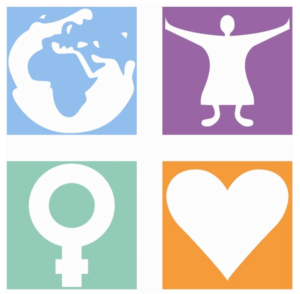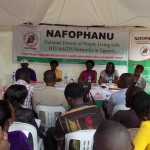The International Community of Women living with HIV Eastern Africa (ICWEA) applauds UNAIDS for the launch of the “UNAIDS Global Updates Report Confronting the Epidemic, Response from 40 years of AIDS” launched on the 14th July, 2021 and for being bold on highlighting inequalities in the global response towards epidemics.
In its Report, Confronting Inequalities-Lessons for Pandemic Responses from 40 years of AIDS”, UNAIDS reveals that People living with HIV (PLHIV) face a double jeopardy, being affected by both HIV and COVID-19, while Key Populations and Children continue to be left behind in access to HIV services.
ICWEA associates with the same as well as finds it befitting to lean on, to re-echo some of the issues that we have previously presented before our government and development partners including the UN Family.
We have taken keen interest in the issues raised and discussed surrounding adolescent girls and young women [AGYW] as well as women living with HIV, we don’t take it for granted that the world takes cognizance of women and girls and the short comings they go through, for that is a reinforcement in our efforts to speak and advocate for them, for the sole purpose of improving the quality of health services and subsequently improving their quality of life.
The report clearly states that despite several comprehensive prevention projects being implemented for adolescent girls and young women through the PEPFAR DREAMS partnership, the global Fund to fight AIDS, TB and Malaria among others, the response in settings with the high HIV incidence still lacks in scale and impact. We cannot agree more with the contention that HIV prevention for adolescent girls and young women still lacks scale and impact.
HIV prevalence is almost four times higher among young women aged 15 to 24 than in young men of the same age1 this is resulting from Gender Based Violence, illiteracy& limited information, limited access to health services, social protection and intimate partner violence. As ICWEA, we have for a long time concentrated our efforts in ensuring better response to the issues affecting Adolescent girls and Young Women, and as such welcome UNAIDS’ voice. We also welcome the Dapivirine Vaginal Ring as a key female-controlled prevention tool for women and girls particularly in Eastern and Southern Africa, the region registering a high number of new HIV infections among adolescents and young women.
“Confronting inequalities report also extensively addresses the HIV response in women, sating with clarity that “SRHR are the foundation of women and girls’ ability to prevent the acquisition of HIV”. The report further states that “the UN General Assembly has committed to ensuring that 95% of women and girls of reproductive age have their HIV, Sexual Reproductive Health Service needs met by 2025, but few low- and middle-income country are currently within reach of that target.” In this regard therefore, we;
Call to Action:
Our governments and all development partners in the fight against HIV to make an effort to end inequalities, adopt and implement the UNAIDS strong strategy on ending inequalities.
We recommend that our governments in the Eastern Africa region, in partnership with the Development partners, adopt and implement the recommendations of the 2021 High Level Meeting Political Declaration.
We appeal to the UNAIDS and UN Family to double efforts the adoption of the Dapivirine ring not only as a viable HIV prevention technology for women in the Region but also an HIV prevention Women-controlled measure.
Contact
International Community of women living with HIV Eastern Africa
Email: icwea@admin.org Facebook: ICW Eastern Africa Twitter: @ICWEasternAfrica Wesite: www.icwea.org



